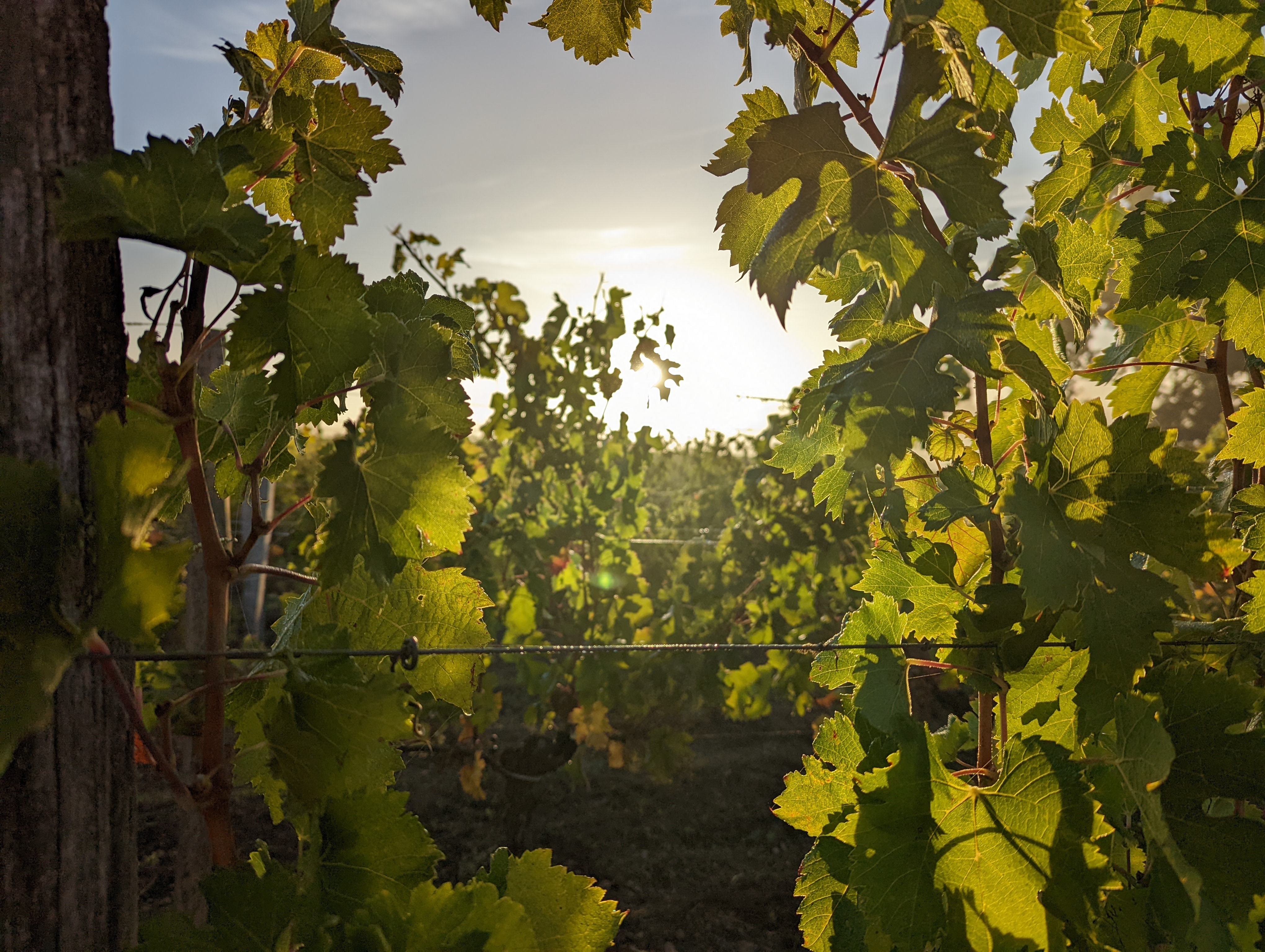Anatomy of the vine: the underside of Vitis Vinifera
The vine, scientifically known as Vitis Vinifera, is a fascinating plant belonging to the Vitaceae family. Its complex anatomy can be divided into three main parts: the vine, the foliage and the grape clusters.
The vine stock
The vine stock is a fundamental element in viticulture, representing the trunk and branches of a vine stock. It is a sarmentose shrub that grows by climbing. It is characterized by its tortuous shape and is essential for the production of grapes used to make wine. Vine stocks are generally planted in spring in well-drained soil rich in organic matter. They must be watered regularly, even in winter, and are maintained throughout the year: pruning, protection against frost, fertilization, etc.
The root system
The vine's root system has two functions: it anchors the soil and it absorbs minerals. But roots do not have the mechanical capacity to perforate the soil. The vine's root system would not be able to fulfil its role completely without the indispensable help of the little creatures that live in and aerate the soil (microbes, earthworms, etc.) by creating underground fissures and galleries. Plunging roots have an anchoring function; they follow the fastest flow of rainwater, enabling them to find water at depth and absorb minerals from the soil. This is essential in dry terroirs or during particularly hot, dry vintages.
The more superficial roots, which spread out more widely, probe the surface of the soil where biological life is more active and minerals more available. The two types of root are therefore complementary and essential to the plant's development.
It is interesting to note that at the beginning of the 20th century, the roots of French vines had to be replaced because of their vulnerability to phylloxera, a devastating aphid.
The rootstock
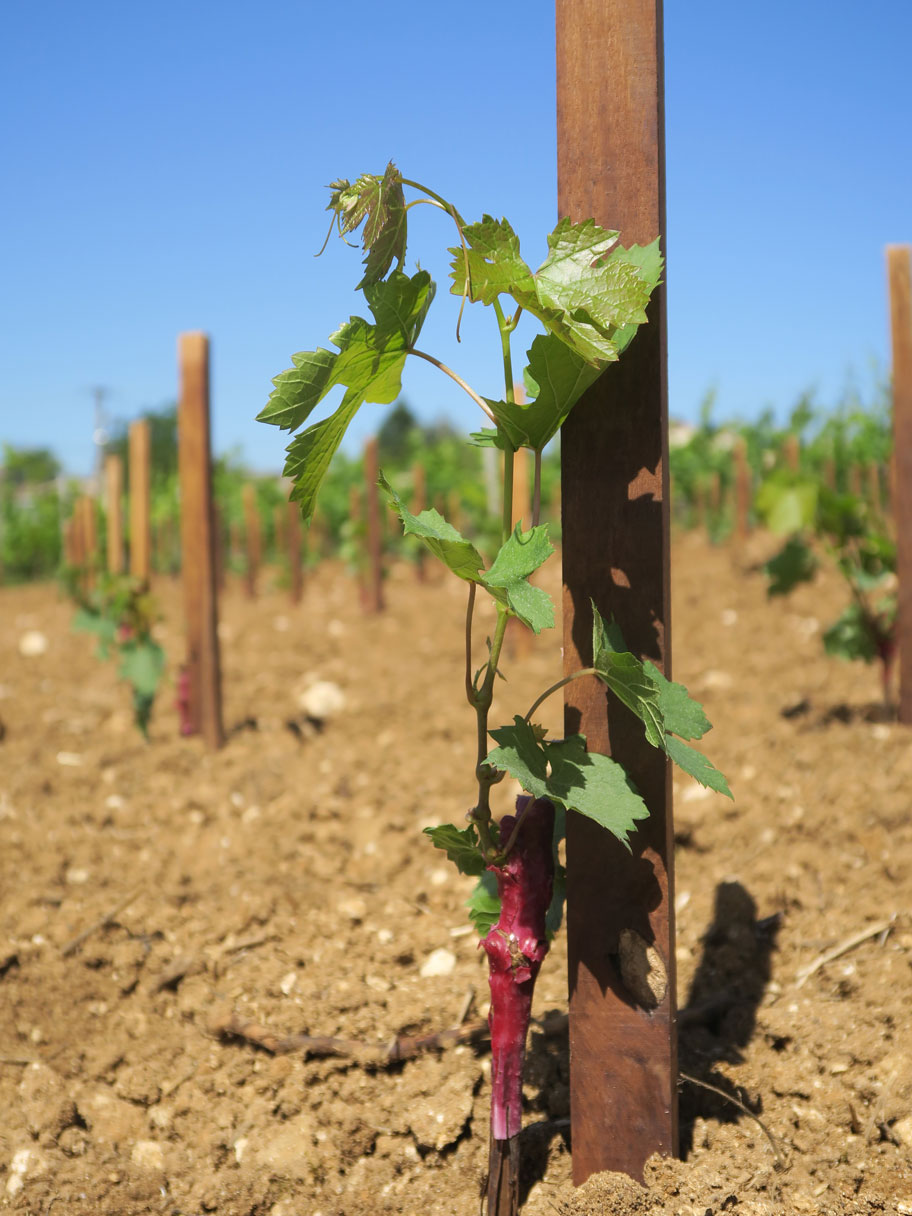
Rootstocks are plants selected for their natural resistance to phylloxera, the parasitic aphid pest that caused a serious crisis in European vineyards from 1864 onwards, particularly in the Bordeaux region. Rootstocks are generally recognised for their low susceptibility to fungal diseases and their ability to adapt to soil conditions. They are derived from different varieties of American vines or from crosses between American vines and European grape varieties. The rootstock has an influence on the roots, which are more or less fleshy depending on its type, and on the density of the roots. It can also alter the overall hydraulic conductivity of the soil and its ability to take up and assimilate minerals from the soil. This is why certain rootstocks are more or less resistant to drought or adapted to certain soils lacking in magnesium, for example.
Choosing the right rootstock at planting is a strategic choice for the winegrower, since the development of the vine and ultimately the grape harvest depend on it.
The trunk
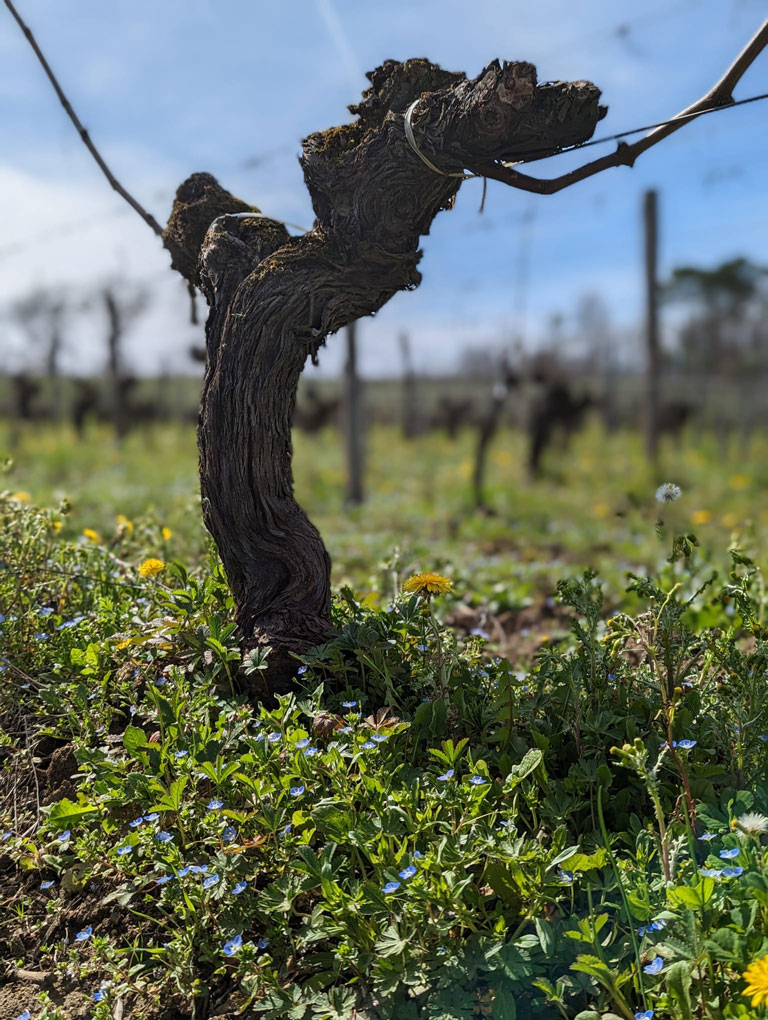
The trunk is the main stem that supports the branches, shoots and leaves of the vine. The trunk plays a crucial role in transporting water and nutrients between the roots and the aerial part of the plant, i.e. the shoots and foliage. It also acts as a reserve for the vine. For example, on hot days, excess sugars are stored there to be injected into the grapes in autumn, or used to protect the plant from frost in winter. It is also responsible for the structure of the vine, enabling it to grow and spread efficiently.
Over the years, the trunk of the vine becomes stronger, thicker and, in some varieties, even very thick, making the plant more resistant to bad weather and disease. The trunk is also of great importance, as its health and size influence grape production and the final quality of the wine.
The branches
The shoots of the vine are essential to the development of the plant. They are the young green shoots that emerge each year and play a crucial role in the vine's life cycle. They develop from the buds on the vine stock and are responsible for forming the bunches that will produce the grapes. Proper pruning and care of the shoots are crucial to ensuring a good, fruitful harvest. In August, the green shoots begin to lignify, i.e. they become harder and take on a brown colour. At this stage, they are called shoots. This transformation is essential to protect the branches from frost during the winter.
During green work, the winegrowers use techniques such as disbudding and de-budding to control the development of the shoots, eliminating those that do not bear fruit in order to optimise the quality and quantity of the production. Shoots pruned short (1 or 3 buds) are called ‘coursons’, ‘rachets’ or ‘crochets’.
Long pruned shoots (more than 4 buds) are called baguettes. Other terms used in French: arçons, archet, long bois, coursonnes, or astes.
The vine nodes
Nodes are recognizable because they have swellings on the vine shoot. They are the ones that carry the leaves, inflorescences, tendrils and buds. They play an essential role in the growth and development of the vine.
- For growth: new organs of the vine develop from the nodes.
- For structural support: nodes strengthen the structure of the shoot, allowing it to support the weight of the leaves and bunches.
- For pruning: Winegrowers use nodes as reference points when pruning. The influence of nodes on grape production is therefore very real.
Just like the branches, a good understanding of the function and structure of the nodes by the winemaker will enable effective management of the growth and productivity of their vines.
The foliage
The buds
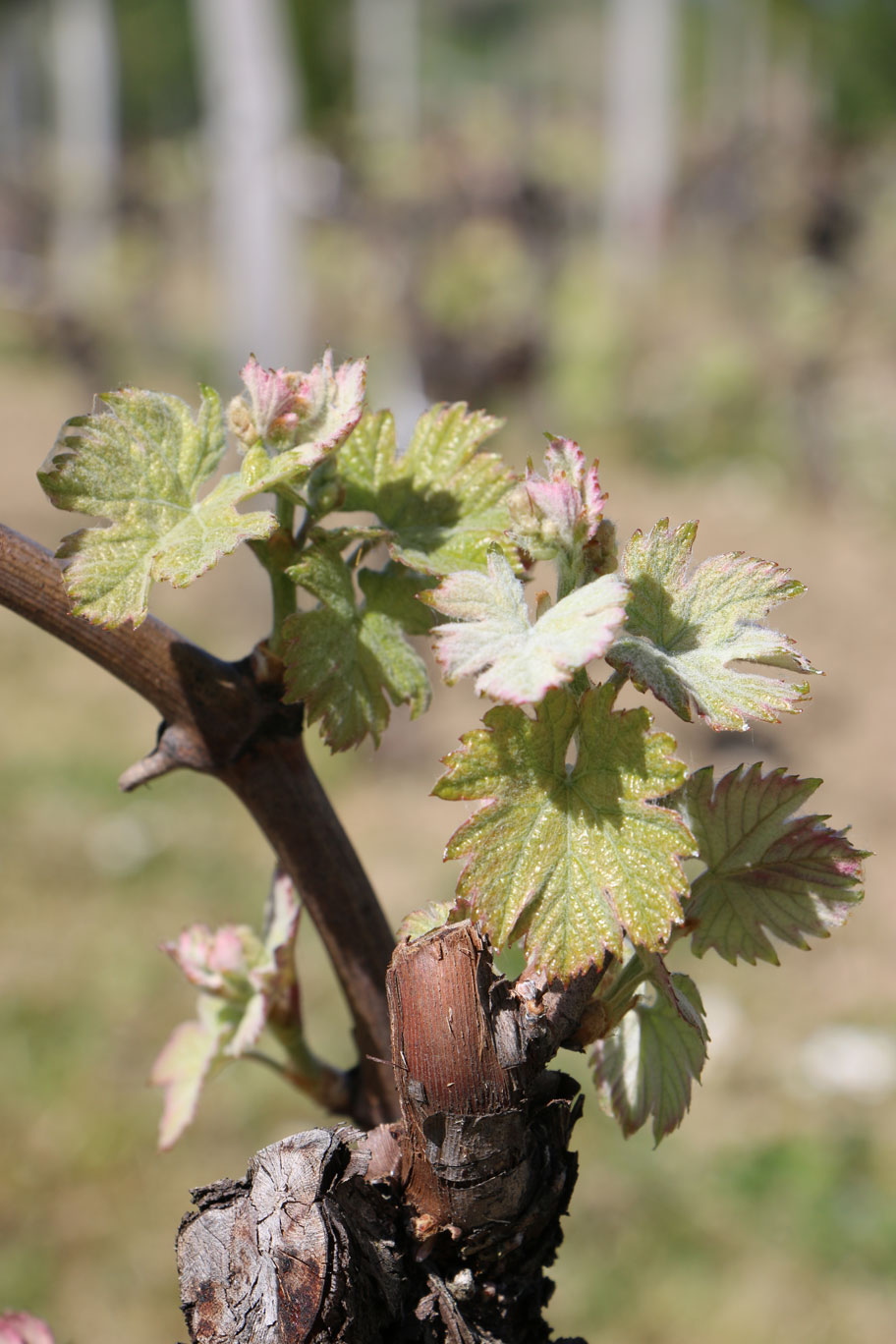
The main buds develop on the vine shoots. They remain dormant during the winter and open in the spring to give rise to new branches and future bunches. Located on the shoots, which are the branches of the previous year that have become wood, the buds generally see their fertility increase from the bottom to the top of the shoot. In their development, the latent buds start in the spring, generally around mid-April, then they give rise to green shoots (branches) at the end of April or beginning of May. These branches then transform into shoots (wood) in August.
For the winemaker, understanding the buds is crucial in order to consider the most appropriate pruning of the vine. Indeed, winegrowers adjust their pruning according to the fertility of the buds. Long pruning (10 to 12 buds per vine) promotes a quantitative yield while short pruning (2 to 3 buds per vine) favors a qualitative yield. Depending on the year, bud management allows winegrowers to control the production and quality of the grapes, directly influencing the future harvest and the quality of their wine.
Tendrils
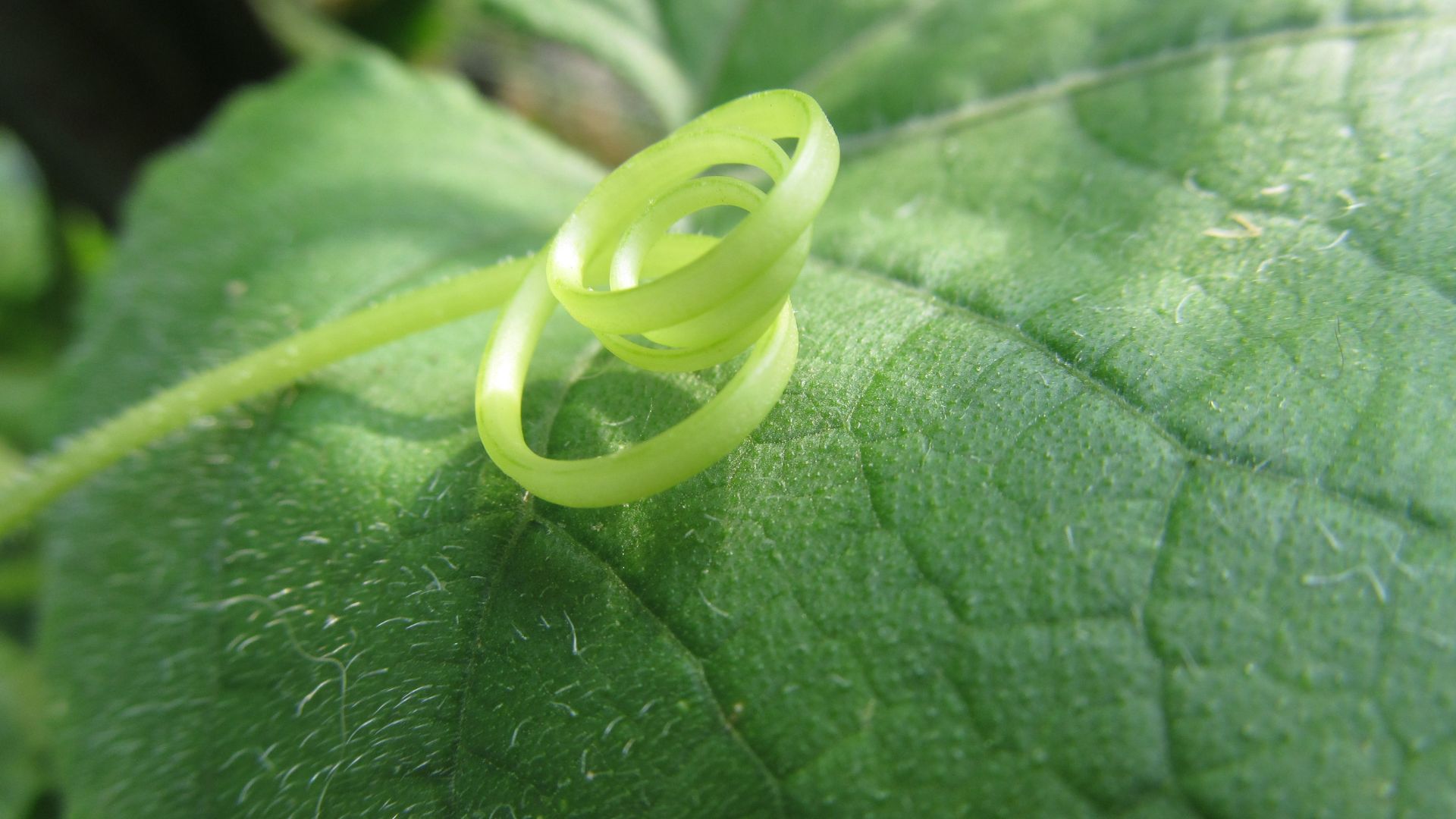 Photo ©Canva
Photo ©Canva
Tendrils are small, thin, coiled (spiral) stems that appear from the shoots of the vine. Their main function is to allow the vine to cling securely to available supports such as trees, trellises or other plants. Thus, thanks to the tendrils that wrap around these supports, the vine stands up to access the light necessary for its photosynthesis, it stabilizes itself and grows efficiently. Since the vine is a climbing plant, the tendrils play a crucial role.
In addition to their supporting role, tendrils can also help fight competitors by providing the vine with the ability to rise above other plants.
Leaves
Vine leaves are generally large, heart-shaped or lobed, with serrated edges. Their morphology depends on the type of grape variety. They are bright green and can be up to 20 cm wide. They are also an essential part of the vine, playing a crucial role both culturally and biologically. In particular, they are responsible for photosynthesis, a vital process that enables the plant to convert sunlight into energy. In addition, the leaves protect the grape bunches from excessive sunlight, rain and pests, thus contributing to the quality of the grapes. They also help to regulate water levels in the plant, promoting the absorption of nutrients from the soil.
Thus, vine leaves are essential for the overall health of the plant. Not only do they promote energy production, but they also promote respiration by facilitating gas exchange with the environment. Good leaf coverage is crucial to ensure optimal ripening of the grapes. It is important to maintain a balance between sufficient foliage for photosynthesis and adequate exposure of the clusters.
It is in the winegrower's interest to shape the foliage of his vineyard effectively in order to improve grape quality, reduce the risk of disease and optimise berry ripening. To control foliage and maximise its potential, winegrowers need to master the appropriate techniques (leaf thinning).
Note that, in addition to their usefulness in viticulture, vine leaves are also used in cooking, particularly in Mediterranean cuisines. They thus constitute a strong cultural symbol.
Bunch grapes
Inflorescences
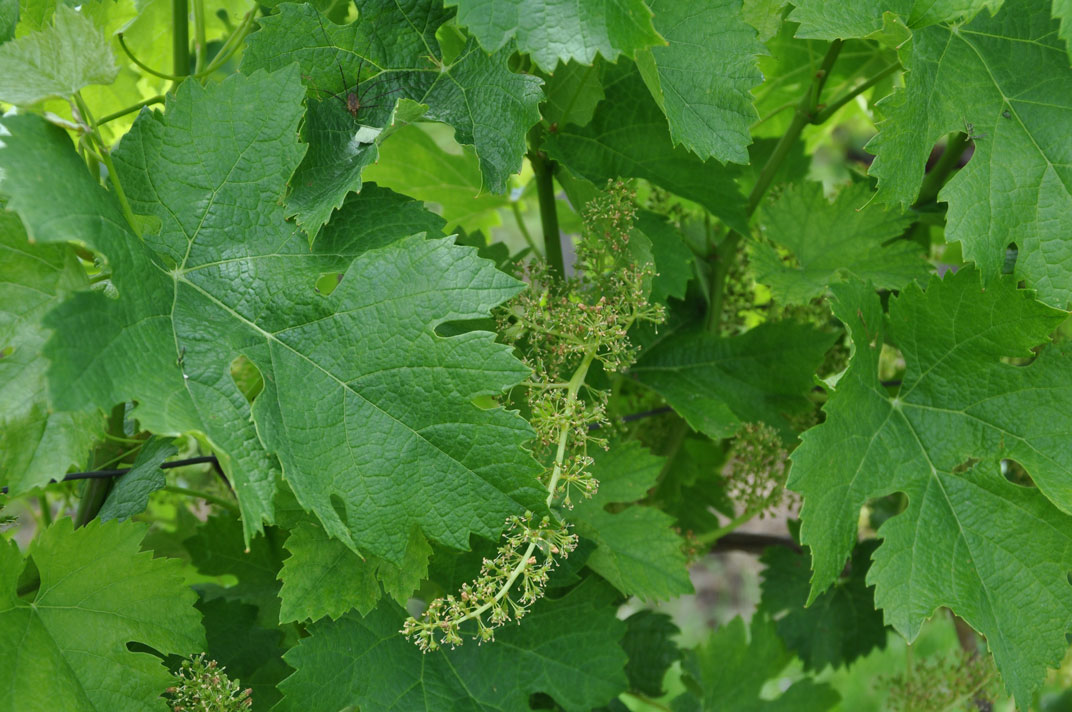
The vine's inflorescence is a complex floral structure that is important for grape production. Inflorescences mark the start of the formation of future bunches of grapes. Their management and protection are therefore crucial to ensuring a good harvest. Foliage management and other cultivation practices can also influence the development and health of the inflorescences.
Vine cluster
The bunch of grapes is made up of the grape berries and the stalk.
Grape stalk
The stalk is the woody framework that forms the skeleton of a bunch of grapes. It is made up of :
- A main stalk which connects the bunch to the vine shoot.
- Branches called pedicels to which the grape berries are attached.
What does it do? To provide physical support for the grape berries, allow sap to be transported to the berries and contain compounds that can influence the taste of the wine (astringent tannins in particular). The stalk is essentially made up of water, fibre, tannins and minerals.
At the winemaking stage, the stalks are often separated from the berries by destemming. It can give a bitter or vegetal taste to the wine and absorbs some of the alcohol and colour, which is why winemakers choose to separate it. Eliminating it during destemming means that the wines are rounder and ready earlier. However, some winemakers choose to leave it in to produce more structured, tannic wines. These wines generally require longer ageing.
Grapes
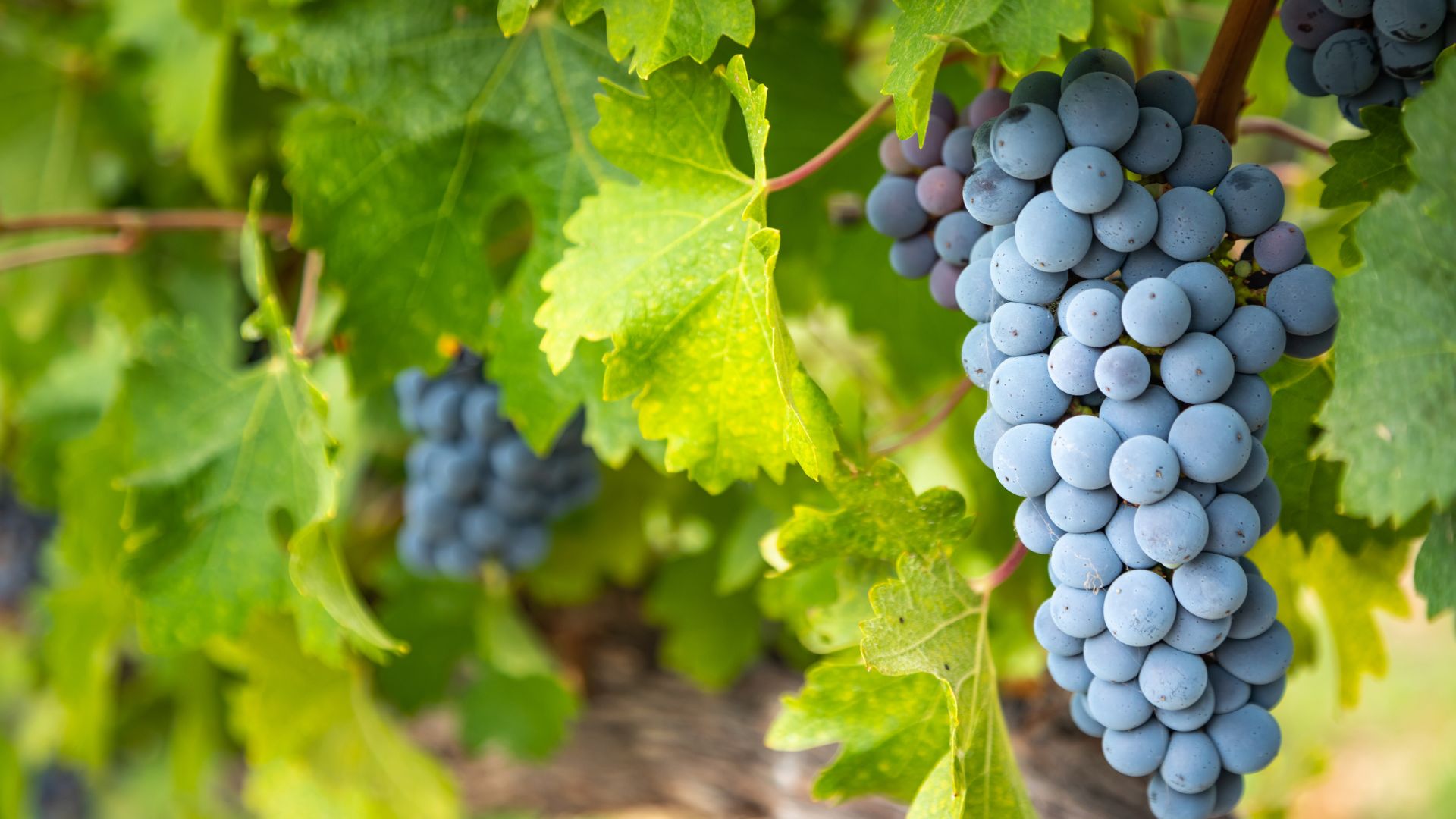
Grapes are made up of three parts: the skin, the pulp and the seeds. In general, the pulp is colourless and the flesh white.
The skin envelops the fruit and can be adorned with several colors depending on the type of grape variety and the stage of ripening of the berries. It is covered with bloom, which gives it a frosted or dusty appearance and makes the skin non-wettable. The bloom retains in particular the yeasts involved during fermentation. The skin contains finer tannins than those of the stalk. Tannins that the winemaker seeks to retain during the pumping over phase during the vinification of red wines.
Pulp makes up the bulk of the grape and is composed of water (70% to 80%), sugars (glucose and fructose), organic acids (mainly malic and tartaric), minerals and aromatic compounds. It is generally colourless, juicy and fleshy. It plays a crucial role in wine production, supplying most of the juice used for fermentation, containing the sugars needed to convert it into alcohol and providing most of the wine's primary aromas. Before fermentation, the pulp forms part of what is known as the must. In addition to the juice of the pulp, this must contains particles of skin, seeds and sometimes pieces of stalk.
As for the pips, they are the seeds of the grape, usually two to four per berry. They contain:
- A large proportion of tannins
- Oils
- Natural antioxidants
- Essential fatty acids, mainly omega 6
In wine production, the seeds are separated from the juice because of their natural tannins, which could give the wine an astringent taste, and the oils they contain, which could adversely affect the quality of the wine. Grape seeds, once considered a by-product of the wine-making process, are now recognised for their many beneficial properties and have a wide range of applications in the fields of health, cosmetics and gastronomy.
In short
As you have understood, the vine is a complex, structured plant, where each part has a function and a utility. To optimize the development of the vine and hope to obtain an abundant and qualitative harvest, the winegrower must take care of, nourish and protect each part of the plant. This is how he adapts his green work carried out throughout the development of the vine, always keeping in mind the needs of the plant and the dangers it will have to face (disease, frost, insects). The winegrower pays particular attention to the reproductive system of the vine composed of inflorescences, flowers and fruits (grapes).
